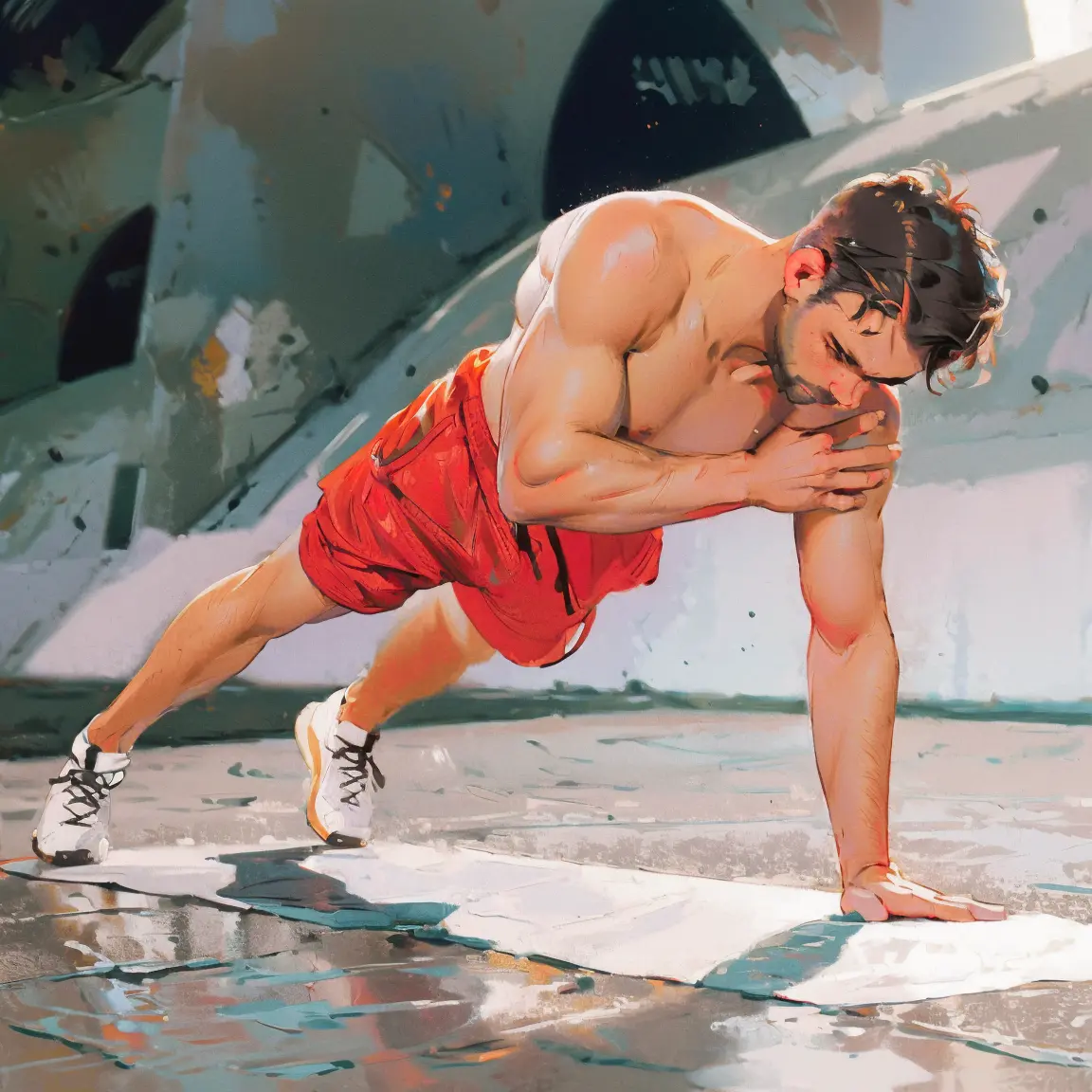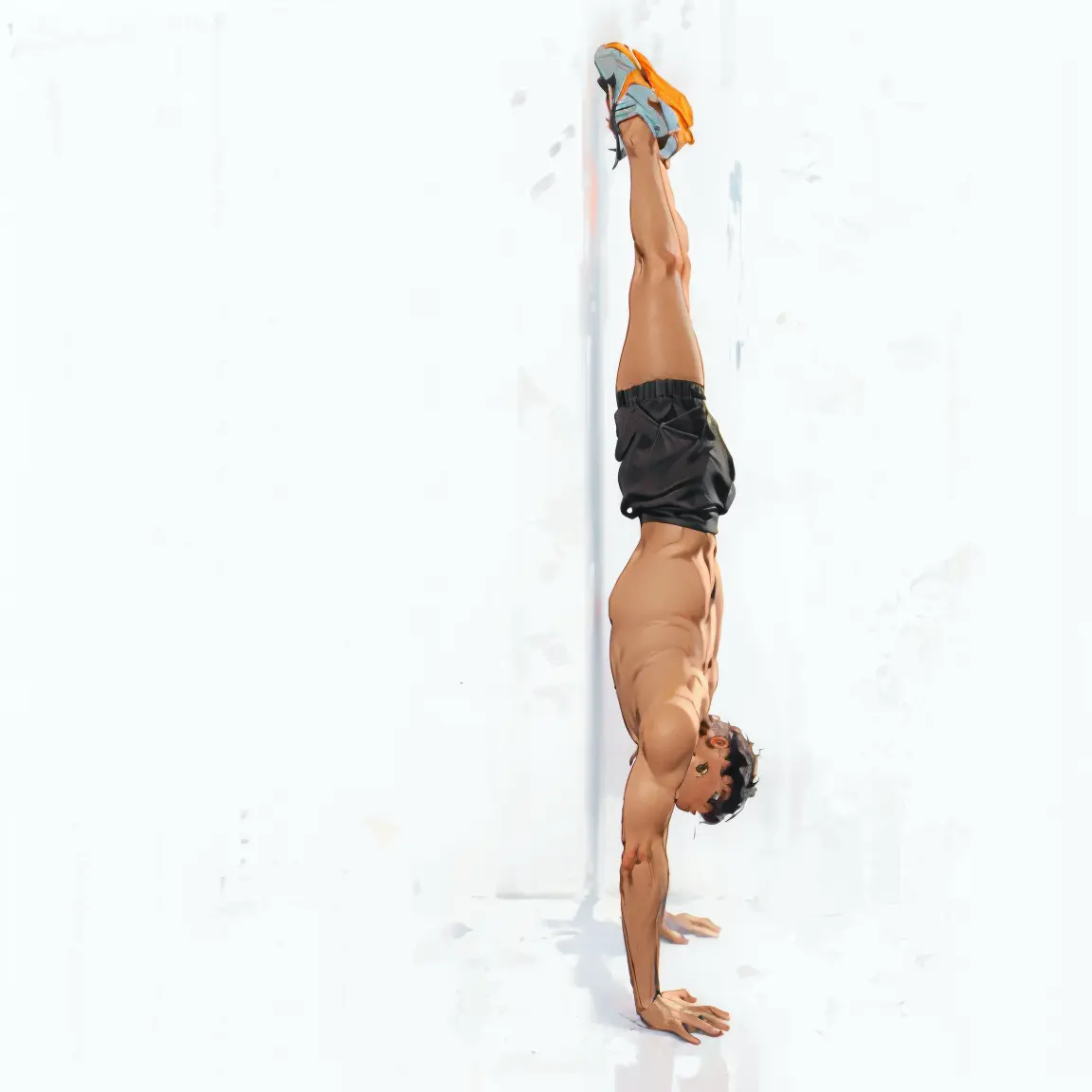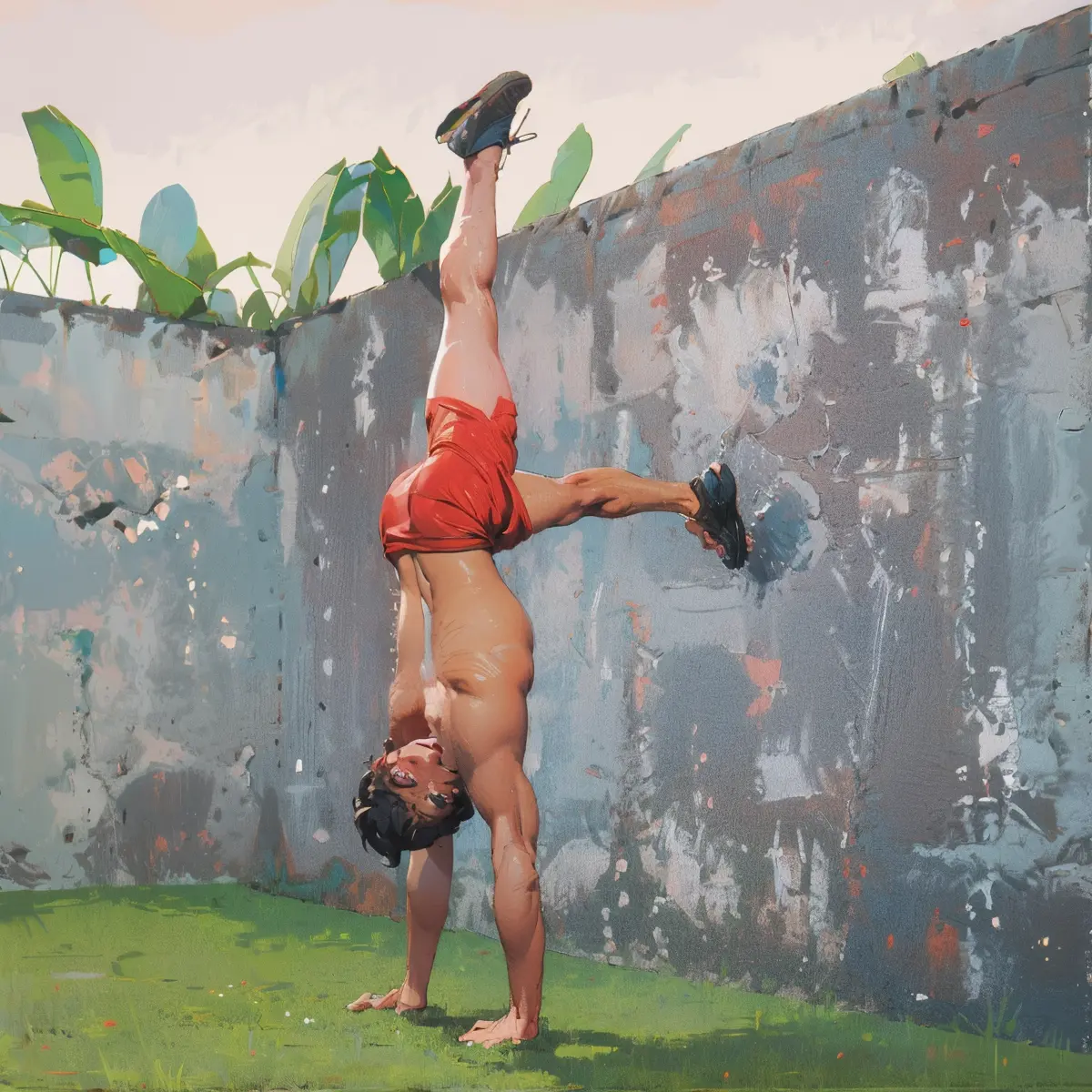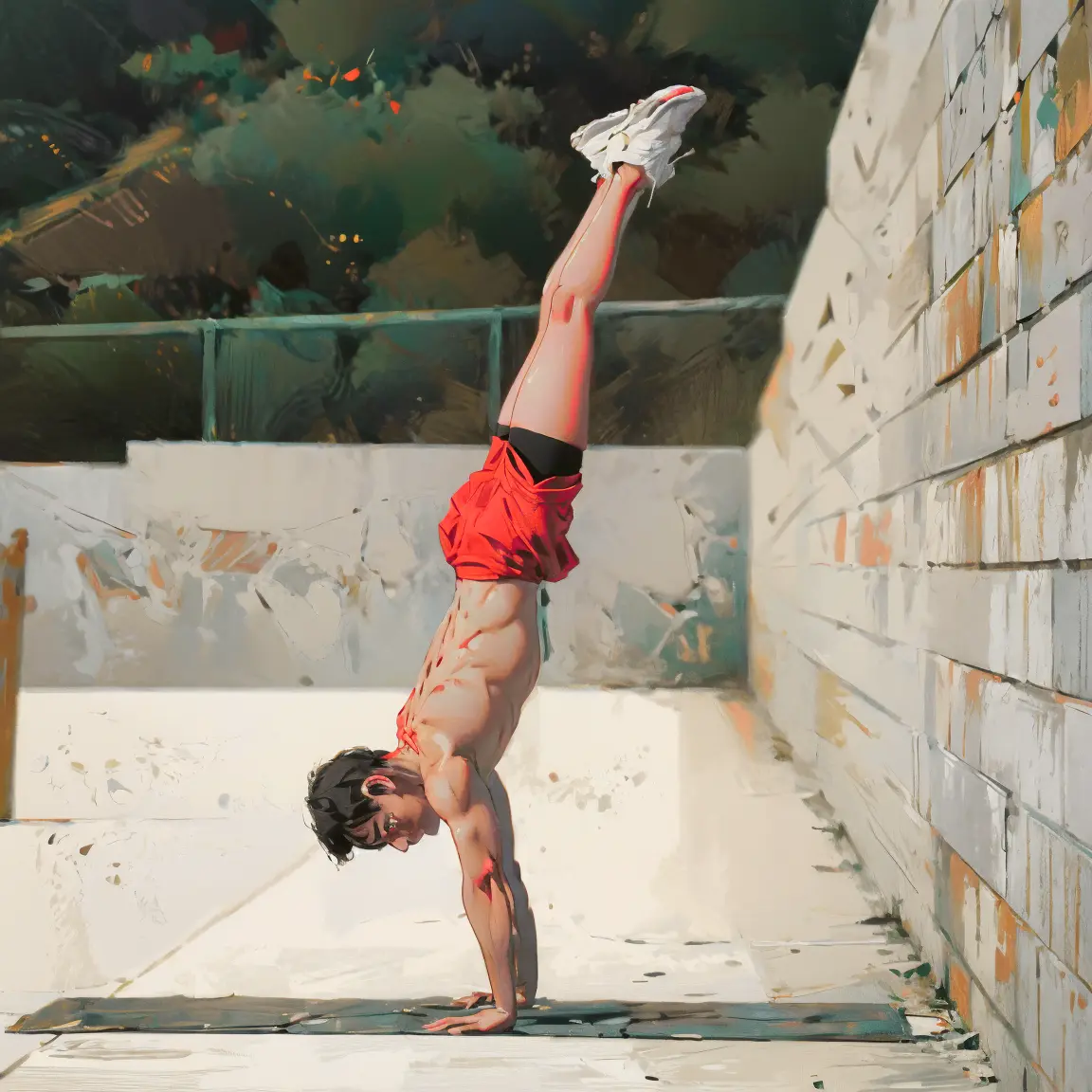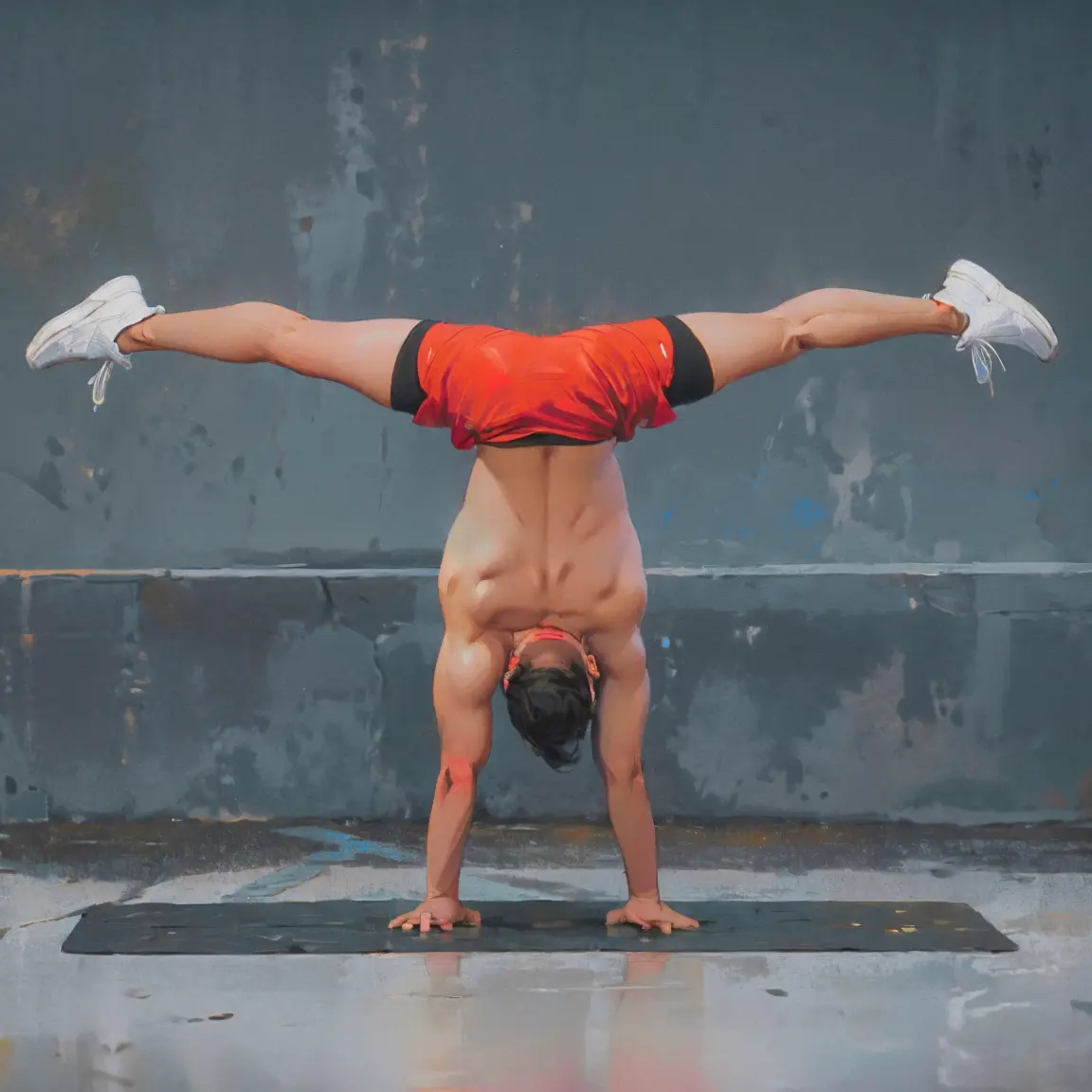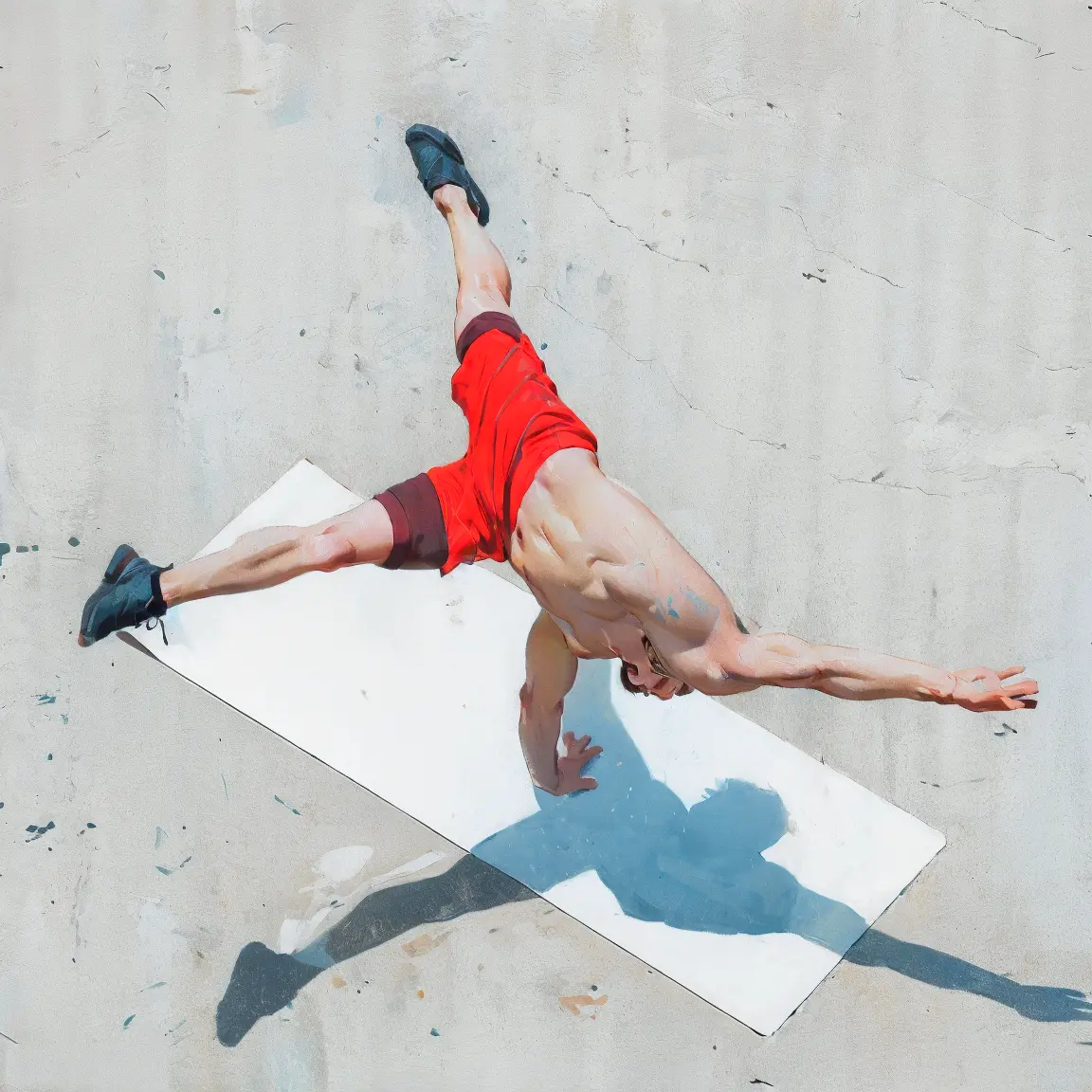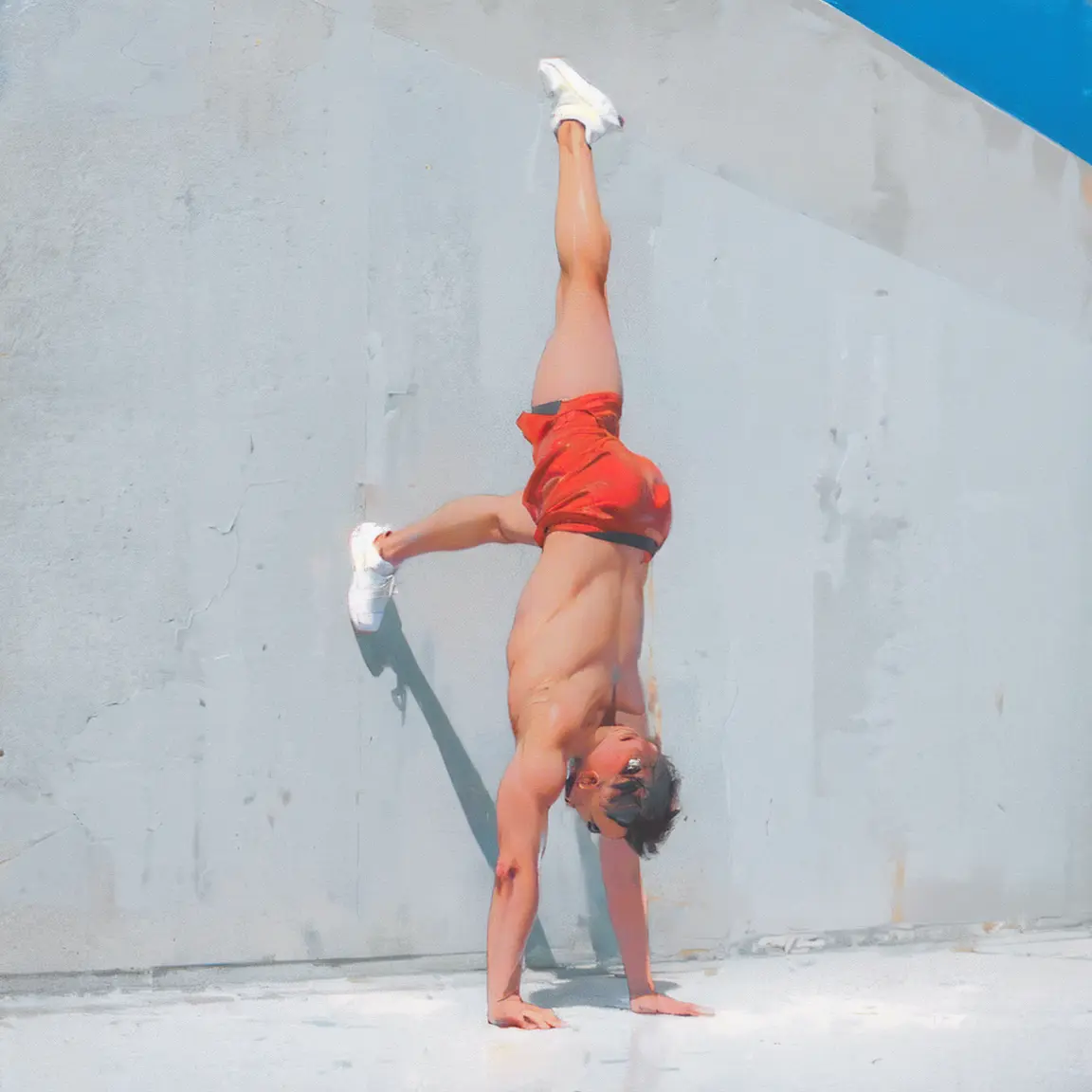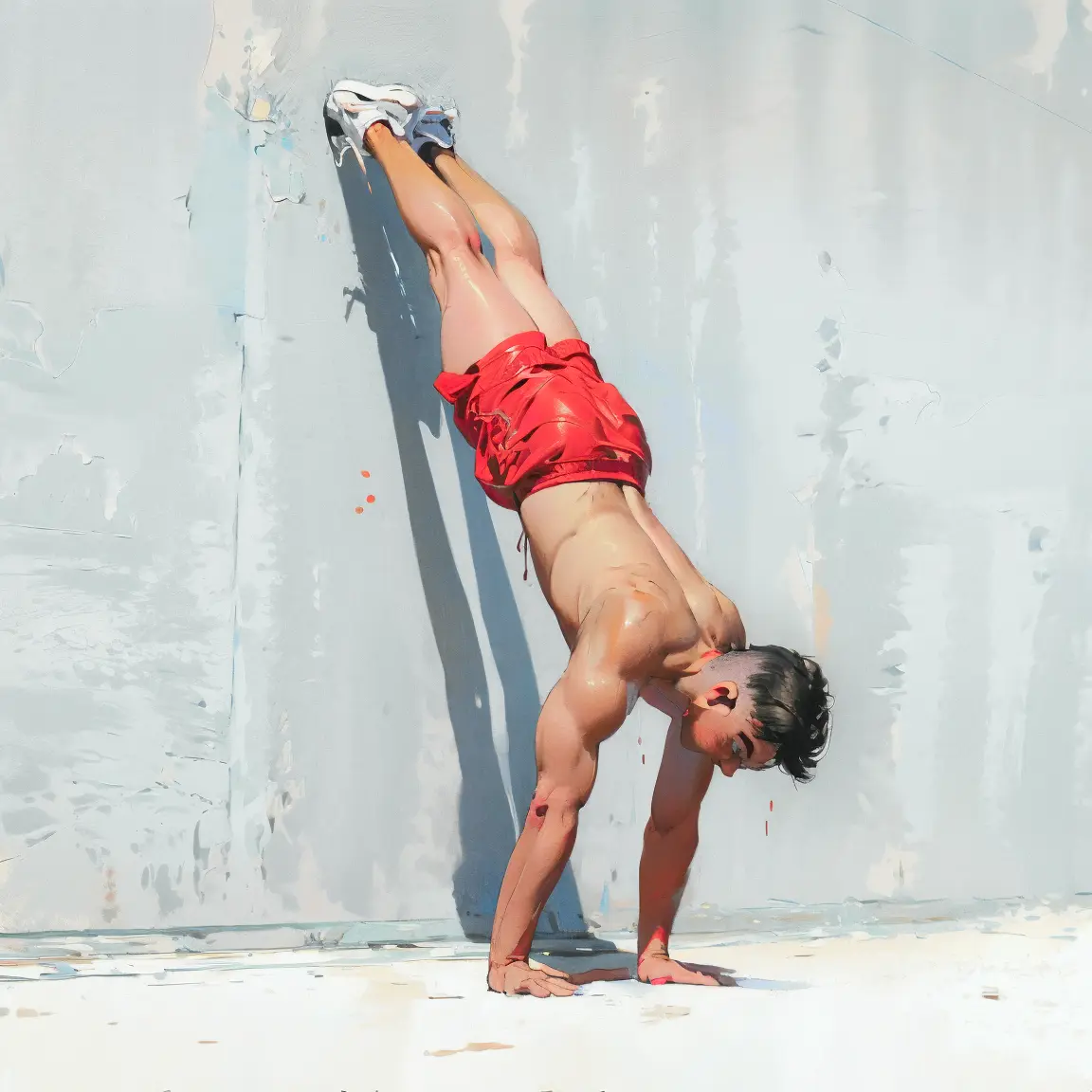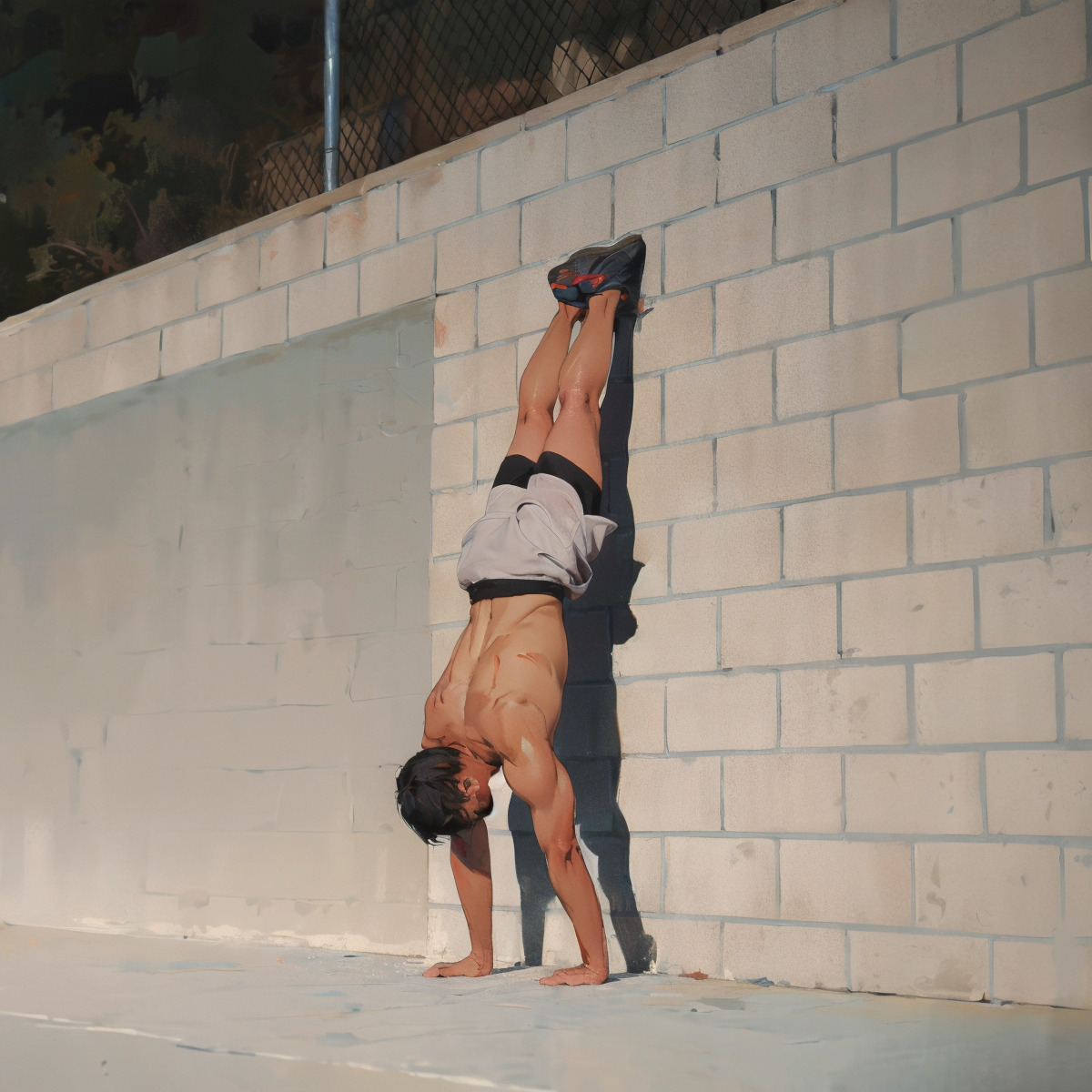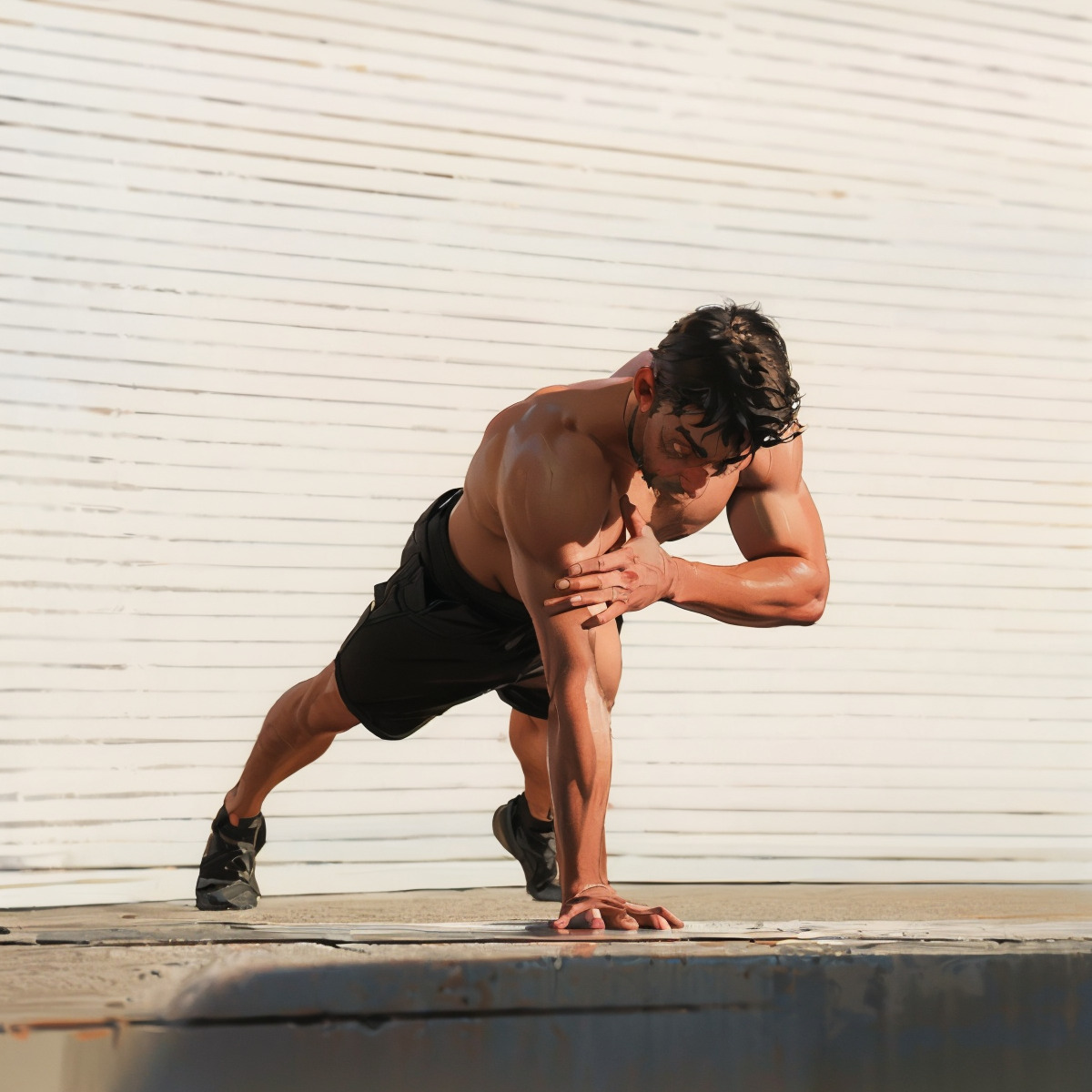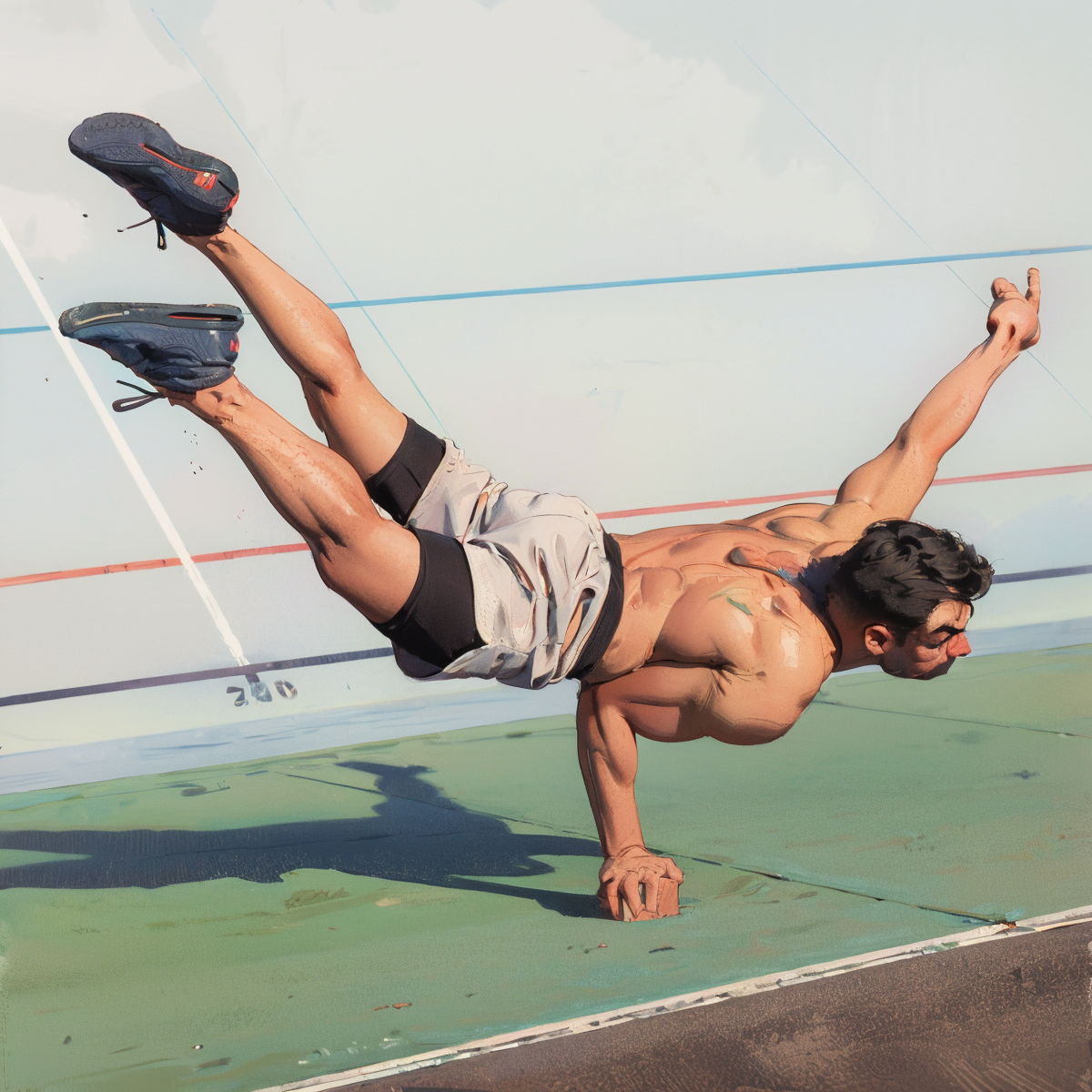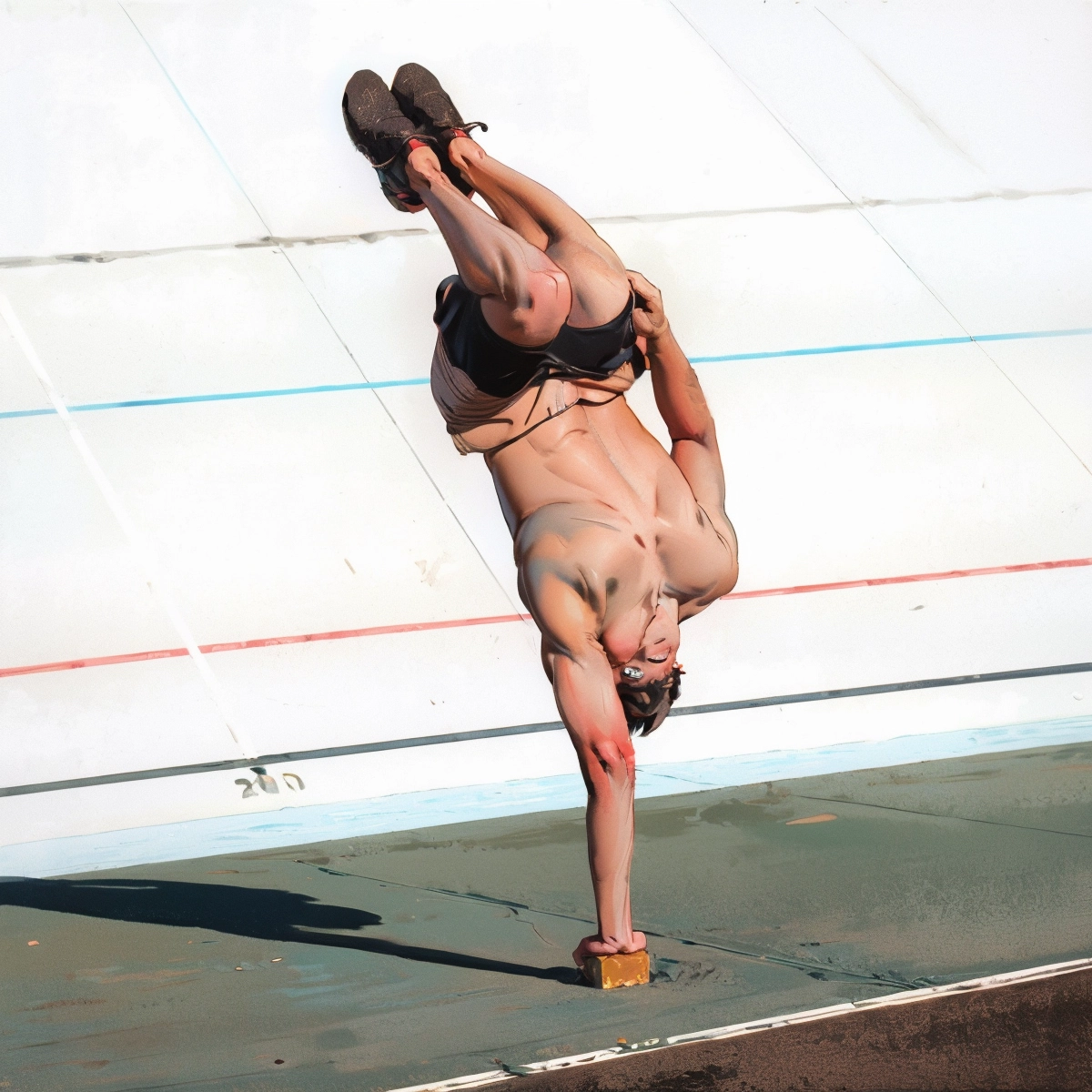Why do we
warm up?
Everyone always loves talking about how important the warm up is but no one seems to really understand why a good warm up matters. Every single one of these reasons should be enough to make you understand that skipping the warm up is an absolute no go! From health, over performance and mind reasons. The earlier you get your head in the game during your workout the better it will be for your training success.
Injury prevention
The most essential thing in every warm up, the one thing you can never ever skip! Injury prevention work! The idea is to analyze the movements that are being utilized in the following workout. In the case of handstands we will mainly be using our shoulders. It is our duty at the beginning of every single workout to actively work on shoulder stabilizing muscles to make sure the rotator cuff is strong, healthy and ready for action. Going through daily shoulder injury prevention exercises has another big advantage. You will be able to detect small injuries well ahead of time. If you are going through your daily shoulder prep and something feels different you will know straight away that you have to be careful in the following session, to dial it back a bit and to heal instead of getting more sore.
Mind muscle connection
A good warm up is not just there to protect you from injuries but also to activate your brain. Using specific exercises that mimic the higher level drills is a bit like dry swimming. A combination of visualizing, engaging and actively focusing on your own body and movement will make it so much easier during your handstand session to isolate joints and to move your limbs in the right direction. Never underestimate the power of your mind!
Priming your body
The more you train the more you have to recover. There will be days when your body does not want to move. There will be days when you simply don’t feel like it. The idea of getting out of the house, to the gym or the park and actually training handstands or whatever your craft is sounds absolutely terrible. These days are normal but you and I both know it is on exactly those days that you can gain an advantage over the competition.
On those days this warm up will mainly function as a transition. The warm up series will help you brush those dark rainy clouds blocking your brain and get you motivated for training. If you are sore, warming up will help you feel better and less stiff. Get your body ready for what is to come.
Signaling that it is go time
Rituals exist for a reason. Many have night time rituals that ideally last 2-3h before falling asleep to signal to the brain that the day is over and it is slowly but surely time to fall asleep. Your warm up can be exactly this when it comes to your training. To signal to the brain that things are about to get serious. For some this moment is when the preworkout first hits the lips or when the beat from the headphones begins to pound. Either way, find what switches you into training mode and stay consistent with it.
How to warm up
before your handstand training
Step by Step
I’ve been training, coaching and performing handstands for well over half of my life. By now I can tell you exactly what you have to do, for how long and in which order to achieve fast, consistent and lasting results.
General Warm Up 10-20 min
Every training needs to start with a general warm up. Don’t exhaust yourself but break a light sweat! Low impact exercises like rope skipping or jogging to the gym can be perfect here. This might also be a great opportunity to do some additional ab and core work if you are trying to get ready for the summer.
Leg Mobility 0-40 min
This is an optional one but we all know the more flexible our legs are the easier handstands become. Plus right after stretching the legs they hold their increased range of motion for up to 45 min assuring that your following handstand session will be so much easier. Your body temperature is already slightly elevated due to the general warm up putting you in excellent conditions for stretching. You might as well take advantage and invest the extra 10-40 min into some mobility work!
Shoulder Prehab 10 min
This is the one you can never ever skip. Give your shoulder rotator cuff some love. Protect it for injuries and monitor it for upcoming complications. This part of your warm up does not have to be long but it must be comprehensive and with razor sharp focus!
FREE SHOULDER PREHAB ROUTINE
Bulletproof your shoulders, improve range, increase strenght and longevity.
Core Activation 5 min
I always say handstands are not about core strength and I absolutely stick to that but you need coordination. Your core needs to learn to stabilize your body upside down in this new environment. Your core needs to figure out how to connect the upper and lower body whilst being upside down and where to move the legs. This will take time and the best way of training this is simply by training more handstands. Make your core’s journey a bit easier by including core activation exercises in every single warm up.
Shoulder Stretches 0-20 min
Another optional one. Depending on how mobile your shoulders are you might need this one or you might possibly not need it! If your shoulders are stiff it will be more challenging to elevate them in your handstand and you might default into the banana handstand. Including passive and dynamic shoulder stretches in combination with specific scapula elevation will bring small but instant results which will help for your upcoming workout. Stay consistent for 10 weeks and you will begin to see significant and lasting results.
Wrist Stretches & Activation 2-10 min
How you decide to warm up your wrists is highly individual. My wrists are rather stiff so I have to mobilize a lot before getting upside down. I can’t even hold a push up position without pre stretching. I am not a believer of wrist conditioning as all you will do is train, harden and fatigue your forearm muscles but including some activation work can be beneficial if your wrists are very hypermobile.
There you have it. You are warm and ready. It is “go time”. Include a warm up like this one or similar at the beginning of every single handstand workout and I guarantee your progress will skyrocket, you will feel better and more confident on your hands, training will be less of a drag and most of all you will stay healthier longer.


